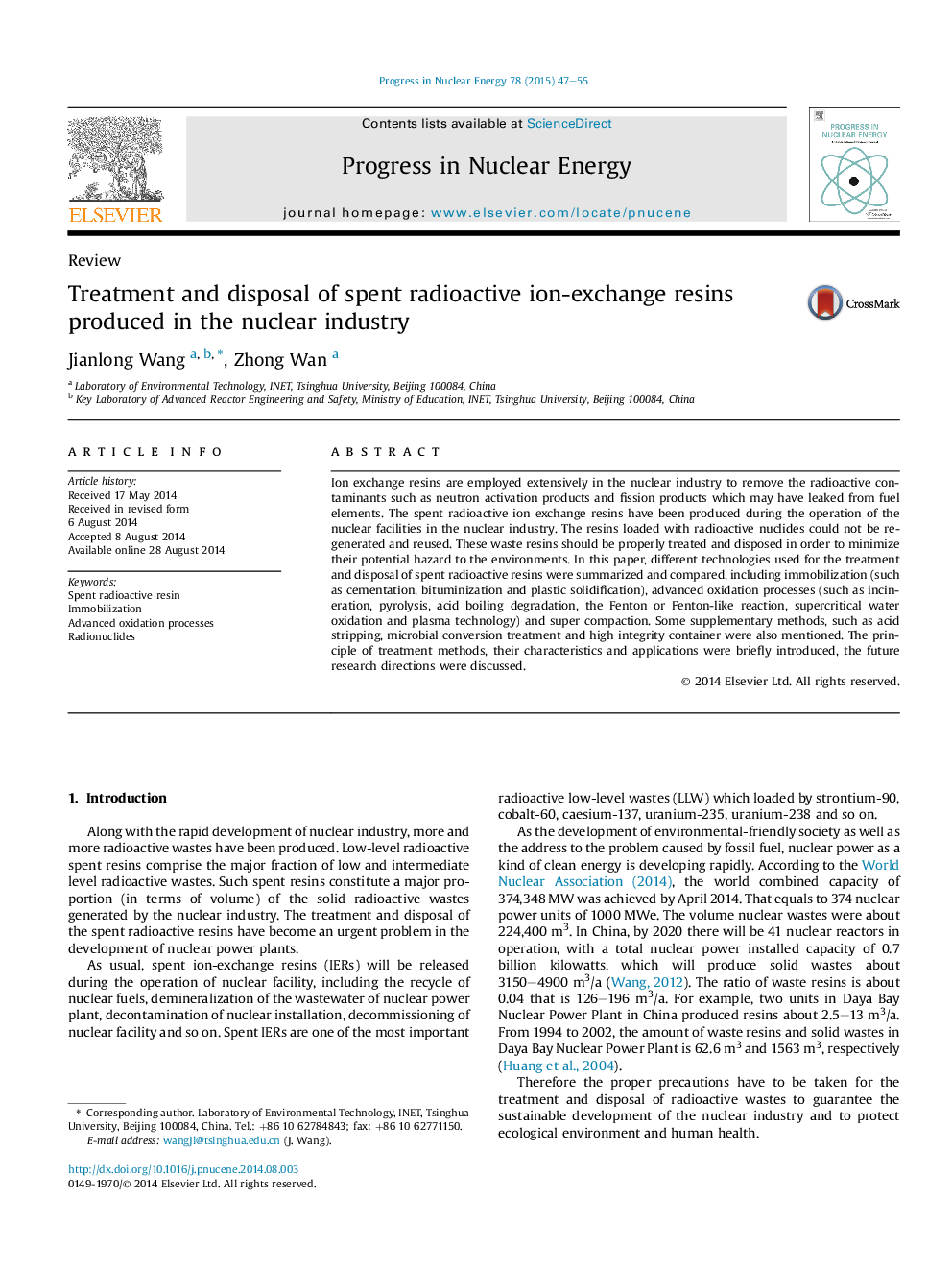| Article ID | Journal | Published Year | Pages | File Type |
|---|---|---|---|---|
| 1740611 | Progress in Nuclear Energy | 2015 | 9 Pages |
•Ion exchange resins are employed extensively within nuclear industry.•The spent radioactive resins should be properly treated and disposed.•Different methods used for treatment and disposal of spent resins were reviewed.
Ion exchange resins are employed extensively in the nuclear industry to remove the radioactive contaminants such as neutron activation products and fission products which may have leaked from fuel elements. The spent radioactive ion exchange resins have been produced during the operation of the nuclear facilities in the nuclear industry. The resins loaded with radioactive nuclides could not be regenerated and reused. These waste resins should be properly treated and disposed in order to minimize their potential hazard to the environments. In this paper, different technologies used for the treatment and disposal of spent radioactive resins were summarized and compared, including immobilization (such as cementation, bituminization and plastic solidification), advanced oxidation processes (such as incineration, pyrolysis, acid boiling degradation, the Fenton or Fenton-like reaction, supercritical water oxidation and plasma technology) and super compaction. Some supplementary methods, such as acid stripping, microbial conversion treatment and high integrity container were also mentioned. The principle of treatment methods, their characteristics and applications were briefly introduced, the future research directions were discussed.
